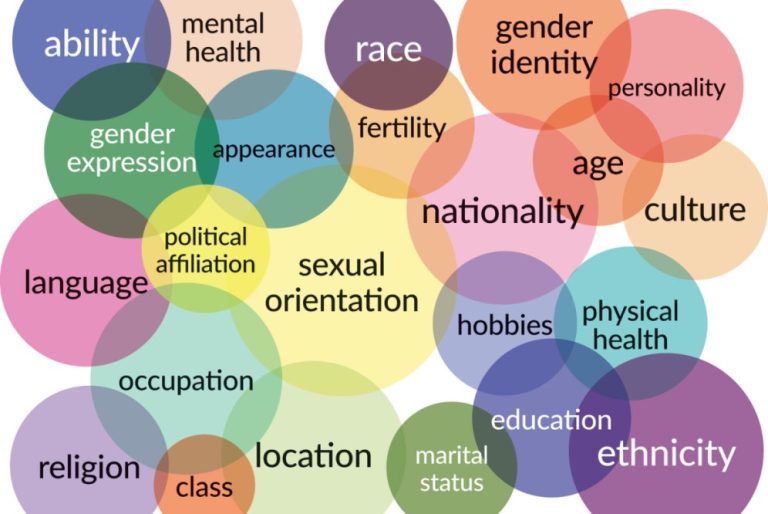
New York, N.Y. — As a straight, white, middle-class man, I approach the concept of intersectionality through the lens of my own privilege—a perspective that shapes, and sometimes limits, my understanding.
Intersectionality, coined by legal scholar Kimberlé Crenshaw in the late 1980s, refers to how various aspects of a person’s identity—race, gender, class, sexuality, ability, and more—intersect to create unique combinations of privilege and marginalization. This framework isn’t inherently better or worse than others; it’s simply the only vantage point I have access to, and navigating it requires both humility and curiosity.
Crenshaw introduced intersectionality to address the specific challenges Black women faced, which were often ignored by both anti-racist movements (focused on Black men) and feminist movements (centered on white women). Her work revealed how singular identity frameworks fail to capture the compounded effects of discrimination. For me, this insight is a starting point—not just for understanding others’ experiences but for examining how my own identity shields me from certain struggles while blinding me to others.
Growing up in a comfortable suburban neighborhood, I rarely faced systemic barriers based on my race, gender, or class. My straightness and whiteness opened doors—access to quality education, stable jobs, and social networks—often without me noticing. Yet, intersectionality teaches me that privilege isn’t a monolith. It’s not just about being white or male; it’s about how these traits interact with others’ identities.
For instance, I’ve worked with colleagues who are women of color, and I’ve seen how their experiences differ starkly from mine—facing wage gaps, microaggressions, and stereotypes I’ve never encountered. A Latina coworker once shared how her disability compounded workplace discrimination, making her invisible in meetings where I was heard. Without intersectionality, I might have dismissed these as isolated incidents rather than systemic patterns.
One of intersectionality’s greatest strengths is its ability to illuminate the unique barriers faced by individuals with multiple marginalized identities. Consider a policy aimed at reducing gender inequality, like ensuring equal pay for women. Without an intersectional lens, it might overlook how Black or Indigenous women earn even less than white women, or how disabled women face additional employment hurdles.
This oversimplification risks perpetuating the very inequities it seeks to address. I’ve seen this in corporate diversity initiatives at my workplace—programs touting gender parity that fail to account for racial disparities, leaving women of color underrepresented.
Intersectionality also fosters empathy and solidarity by urging us to look beyond singular identity categories.
As someone privileged by default, I’ve had to actively listen to stories outside my experience—friends who are queer, disabled, or working-class sharing how their identities shape daily life.
A gay Black friend described navigating homophobia and racism simultaneously, feeling erased by movements that prioritize one over the other. These conversations have broadened my perspective, pushing me to advocate for inclusive policies that don’t just elevate one group but uplift the most vulnerable intersections. This approach strengthens movements for equity, creating coalitions where everyone’s reality is seen.
Yet, I wrestle with my positionality. My privilege can make it tempting to speak for others or assume I fully grasp their struggles—a risk Crenshaw warns against. I’ve had to learn to ask questions, step back, and amplify marginalized voices rather than dominate discussions.
For example, when I joined a community board addressing housing inequality, I initially proposed solutions based on my middle-class lens, only to realize they ignored the needs of low-income people of color facing eviction risks. Listening to their stories reshaped my approach, aligning it with intersectional principles.
Ultimately, intersectionality is indispensable for meaningful social change.
Governments, organizations, and individuals—like me—must adopt it as a guiding principle to craft policies and initiatives that serve everyone, especially those whose voices are often silenced. When I volunteer with local nonprofits, I now prioritize intersectional training, ensuring programs address how race, class, and gender intersect in housing, healthcare, and education.
This isn’t just altruism; it’s recognition that true liberation—mine included—depends on dismantling systems that harm us all, albeit unevenly.
Intersectionality reminds me that no one’s path is singular. My privilege doesn’t erase my responsibility to understand and act on the overlapping oppressions others face. It’s a lifelong journey of learning, unlearning, and listening—a path I walk with humility, knowing my perspective is just one thread in a vast, interconnected tapestry of human experience.
#Intersectionality, #PrivilegeAndOppression, #KimberleCrenshaw, #SocialJustice, #DiversityAndInclusion, #WhiteMalePerspective, #EquityMatters, #SystemicInequality, #NewYorkLife, #PersonalEssay
Privilege and Oppression: My White, Male Journey with Intersectionality (March 2, 2024)